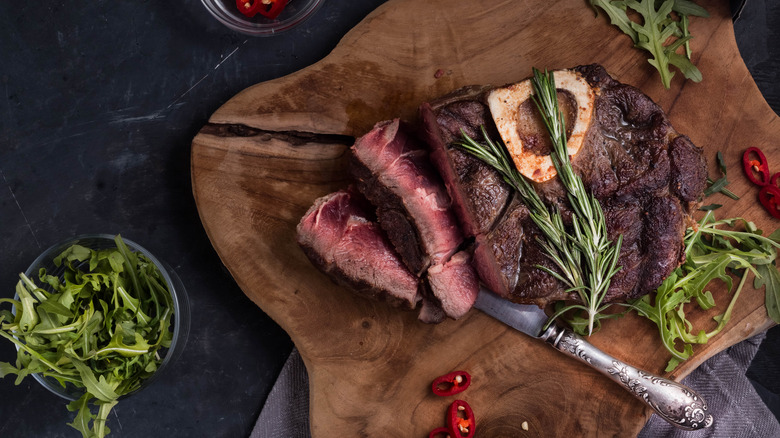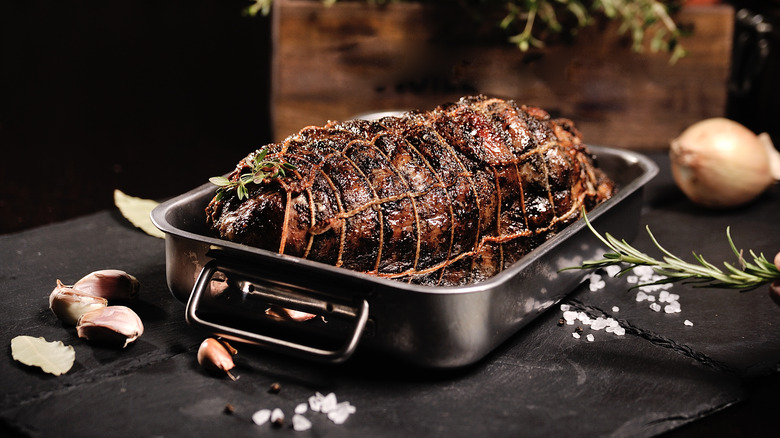How You Should Position Roast Beef So It Doesn't Dry Out In The Oven
Roast beef is the essence of holiday dinners and Sunday lunch. Its deliciously tender and juicy center imprints tasteful dining memories, making it a recurring meal — yet it wouldn't be the classic roast beef we all love if not for a delicate cooking process. Thus, a technique that prevents the beef from drying out by correctly placing it in the oven is imperative. Two things to consider here are your roasting pan and rack.
We suggest placing your beef on a rack and then placing said rack in a roasting pan. If, however, you're working with bone-in ribs such as standing rib roast, you won't even need a rack. The bones will act as a rack and prevent the meat from being in direct contact with the roasting pan.
To keep the roast beef moist, you must capture and capitalize on its fat as it cooks. The best way to do this is by placing the meat fat side up. This way, fat drips down the roast beef as it melts and you get a succulent roast. It's essentially a self-basting technique that ensures the meat is always covered in juice to prevent drying out.
How important are the roasting pan and rack for roast beef?
A roasting pan and rack will either get you a delightfully moist or just average cut of roast beef. Yes, we want to avoid drying the meat, but we also don't want steamed roast beef. For this reason, select an ideal roasting pan that's shallow to allow steam to escape by its low vertical sides. Besides, there's not much juice to capture except the fat, so it shouldn't be that deep.
Using a rack is just as important. When you place the roast beef on an oven rack, you leave room for hot air to move beneath it so that the meat cooks evenly. We also suggest using the middle rack for even air circulation and therefore even cooking. Even more, you don't want the meat cooking in its juices lest we bypass that crispy exterior. A rack will act as that barrier between the meat and its juices.
Still, you can use techniques beyond the roasting pan and rack to prevent roast beef from drying out. Letting the beef rest is one such method, allowing the juices to seep through the meat evenly. Otherwise, you can prep roast beef in advance with juicy results using the reverse sear method, which works every time.

